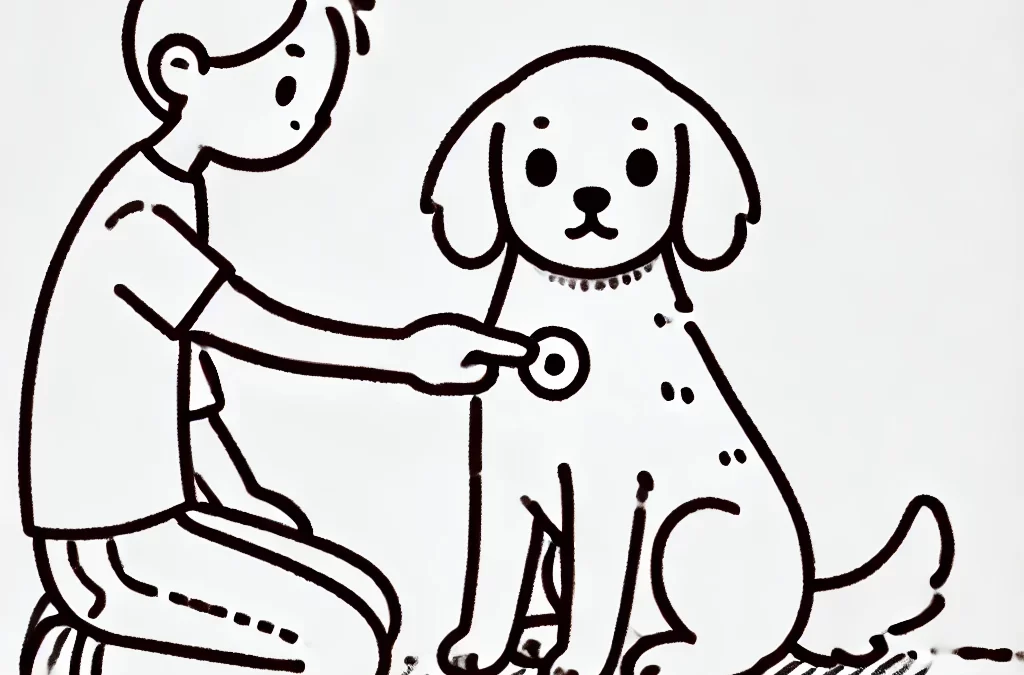
執筆者 TCMVET | 2025年2月11日 | 犬の癌と腫瘍
愛猫が癌と診断されたという悲痛な事実に直面した飼い主にとって、その道のりは不安でいっぱいです。手術、化学療法、放射線療法などの従来の治療法が一般的に推奨されていますが、多くの人はこれらの選択肢を補完する代替手段、あるいは場合によっては全体的なケアへのホリスティックなアプローチを求めています。最も有望な分野の一つは、 自然療法 猫の腫瘍の成長を遅らせ、身体的な安らぎだけでなく、ペットと飼い主の両方に精神的な安らぎをもたらします。
腫瘍管理における自然の力
自然療法は、植物、ハーブ、その他の天然物質の治療効果を利用して、治癒を促進し、炎症を軽減し、免疫システムを強化します。主に癌細胞の除去に焦点を当てた従来の治療法とは異なり、自然療法は、体内から癌と闘う体の能力を高めることを目指しています。この総合的なアプローチは、腫瘍自体だけをターゲットにするのではなく、システム全体のバランスを回復することを目指しており、猫の癌を管理するための包括的なソリューションを提供します。
猫の腫瘍の成長を遅らせるための重要な自然療法
- ウコン
がんに対する最もよく知られた自然療法の一つである ターメリック と呼ばれる化合物が含まれています クルクミンクルクミンには、強力な抗炎症作用、抗酸化作用、抗がん作用があることがわかっています。クルクミンは、がん細胞の増殖を抑制し、アポトーシス(プログラム細胞死)を促進することで、腫瘍の成長を遅らせることができます。さらに、特にがん治療中の解毒に不可欠な肝機能をサポートします。
- カンナビジオール(CBD)オイル
CBDオイル麻から抽出されたCBDは、がん治療におけるその可能性に注目が集まっているもう1つの強力な自然療法です。研究によると、CBDはがん細胞の細胞死を誘導し、炎症を軽減することで腫瘍の成長を遅らせることができることがわかっています。さらに、がん治療にしばしば伴う痛みや不安を管理することで、猫の生活の質を向上させることができます。
- 霊芝
霊芝は、免疫力を高める特性があることから、伝統的中国医学(TCM)で長い間使用されてきました。霊芝には、免疫機能を高め、がんと闘う体の能力を促進するベータグルカンが含まれています。免疫システムをサポートし、全体的な活力を向上させることで、 霊芝 腫瘍の成長を遅らせ、猫の癌への対処能力を高めるのに役立ちます。
- 黄耆根(オウギ)
中医学でよく使われる アストラガルス 免疫機能を高め、炎症を軽減する効果があることで知られています。黄耆は白血球の生成を刺激し、免疫反応を高めることで、体がより効果的にがんと闘い、腫瘍の進行を遅らせるのに役立ちます。
- エシアックティー
エシアックティー4 種類のハーブ (ゴボウの根、ヒツジスイバ、アカニレの樹皮、インドダイコン) をブレンドしたこのお茶は、解毒作用と抗がん作用があることで知られています。このお茶は、免疫システムを改善し、体内の毒素を取り除き、がん細胞の増殖を抑制する効果があると考えられています。
TCMVET 白徒霄:古代の知恵を現代風にアレンジ
古代の治癒原理を現代的に応用したいペットオーナーのために、 TCMVET 白頭霄 ペットの腫瘍の管理を助けるために特別に配合された製品として際立っています。抗がん作用で知られる伝統的な中国のハーブ、例えば 白華舒舒曹 そして ダン・ギTCMVET Baituxiao は、ハーブサプリメントの現代的な進歩を活かして、腫瘍治療に対するバランスの取れたアプローチを提供します。
- 腫瘍の成長を抑える: TCMVET 白滴霄に含まれる生薬は、腫瘍の成長を抑制し、既存の腫瘍のサイズを縮小するために一緒に働くように慎重に選択されています。その処方は、全体的な健康を促進しながら癌細胞を管理するのに役立ちます。
- 免疫力のサポート: TCMVET Baituxiao は免疫システムを強化することで、猫の体が癌とより効果的に戦い、再発を防ぐのを助けます。
- 副作用を最小限に抑えるTCMVET Baituxiao を使用する主な利点の 1 つは、炎症や不快感を軽減し、治療を受けている猫が快適に過ごせるようにすることです。
TCMVET Baituxiao を猫のケア計画に取り入れることで、腫瘍を管理するための総合的かつ総合的なアプローチの一環として、大きなメリットが得られます。
猫に自然療法を選ぶ理由
猫の腫瘍の成長を遅らせるために自然療法を選択することは、従来の治療法に代わるものではなく、体の自己治癒力を高めることです。自然療法は、化学療法や放射線療法でよく見られる厳しい副作用の代替手段であり、従来の治療法と連携して全体的な健康と快適さを改善します。
次のような自然療法を使用することで ターメリック, CBDオイル, 霊芝そして アストラガルス、次のような製品とともに TCMVET 白頭霄ペットの飼い主は、猫が気分を良くし、長生きし、がんに強く立ち向かえるよう手助けすることができます。
最終的な考え
猫の腫瘍を自然療法で治療することは、単に腫瘍を治療するのではなく、体に栄養を与えてサポートするという思いやりのある総合的なアプローチです。これらの療法は、全体的な健康状態を改善し、免疫力を高め、炎症を軽減することで、従来の治療法の効果を高めることができます。愛猫に最善のケアを提供するために、新しい治療法を追加する前に必ず獣医師に相談してください。

執筆者 TCMVET | 2025年2月10日 | 犬の癌と腫瘍
猫の癌は悲惨な診断ですが、免疫システムの役割を理解することで、猫の仲間をどのように助けることができるかを知ることができます。免疫システムは、感染症、異常細胞、さらには潜在的な腫瘍と戦うために休みなく働く、人体の自然な防御機構です。残念ながら、腫瘍は免疫システムを回避し、癌が成長して広がることがあります。そこで、次のような疑問が生じます。 猫の免疫システムを強化してがんと闘い、腫瘍形成のリスクを減らすにはどうすればよいでしょうか?
猫の腫瘍と免疫システムの関係
免疫システムは、がんの発症を防ぐ上で重要な役割を果たします。免疫システムは、腫瘍に発展する可能性のあるものも含め、異常な細胞を特定して破壊します。しかし、一部のがん細胞は免疫システムを回避したり抑制したりする能力があり、体がそれらを認識して破壊することが困難になります。
猫の場合、この免疫回避はいくつかの方法で起こります。腫瘍は免疫チェックポイントや免疫細胞による攻撃を防ぐメカニズムを発達させることがあります。また、免疫反応を抑制する物質を生成することもあります。つまり、猫の免疫システムが強力であっても、免疫システムが最適に機能していないと、特定の種類の癌が進行する可能性があるということです。
しかし、猫の免疫システムをサポートし強化することで、猫の体がこれらの異常な細胞と戦うのを助け、既存の腫瘍の進行を遅らせたり、新しい腫瘍が形成されるリスクを減らしたりすることができます。
猫の免疫システムの働き
免疫力を高める方法を検討する前に、猫の免疫力がどのように機能するかを理解することが重要です。人間と同様に、猫には病気から身を守るために連携して働くさまざまな細胞と臓器で構成された複雑な防御ネットワークがあります。主な役割を担うのは、次のとおりです。
- 白血球(T細胞、B細胞、マクロファージ)これらの細胞は、ウイルスや癌細胞などの有害な侵入者を識別して攻撃する役割を担っています。
- リンパ節と脾臓これらの器官はそれぞれリンパ液と血液をろ過し、有害な病原体や異常な細胞を捕捉します。
- 抗体B 細胞によって生成されるこれらのタンパク質は、病原体を中和し、癌細胞を標的にするのを助けます。
- サイトカインこれらは、免疫反応を調整し、免疫細胞が適切に機能することを保証するシグナル伝達分子です。
がん予防における免疫システムの役割は、変異した細胞や損傷した細胞をがん化する前に検出して破壊する能力にあります。しかし、免疫システムが弱まると、これらの機能を実行する効率が低下し、がん細胞が抑制されないまま増殖するようになります。
猫の免疫力を高める方法
猫の免疫システムを強化するには、食事やライフスタイルの変更、また特定のサプリメントを通じて、いくつかの戦略があります。以下に、猫の免疫力を強化し、腫瘍のリスクを軽減する方法をいくつか示します。
1. バランスのとれた栄養豊富な食事を与える
健康的な食事は、強力な免疫システムの基礎です。猫には、タンパク質、ビタミン、ミネラルなどの必須栄養素が豊富なバランスの取れた食事が必要です。野生で食べるものを模倣した、種に適した高品質の食事は、全体的な健康と免疫機能をサポートするために不可欠です。
- 抗酸化物質: ビタミン A、C、E などの抗酸化物質を豊富に含む食品は、免疫細胞を酸化によるダメージから保護するのに役立ちます。抗酸化物質は、免疫系を弱め、がんの発症に寄与する可能性のある体内のフリーラジカルを中和します。
- オメガ3脂肪酸魚油や特定の植物油に含まれるオメガ 3 脂肪酸には、免疫反応の調整に役立つ抗炎症作用があります。健康的な免疫機能をサポートし、がんに関連する炎症を軽減する効果もあると考えられます。
- 亜鉛とセレン両方のミネラルは適切な免疫機能に不可欠であり、免疫細胞の生成と反応に関与しています。
2. 免疫力を高めるサプリメントを摂取する
猫の免疫システムをサポートするために特別に設計されたサプリメントがいくつかあります。猫の食事にサプリメントを追加する前に必ず獣医師に相談してください。一般的な免疫増強剤には次のものがあります。
- 初乳初乳は、哺乳類が出産直後に分泌する乳の一種で、免疫機能をサポートする抗体と成長因子が含まれています。初乳は猫の免疫活動を高め、がんの予防に役立ちます。
- キノコエキス霊芝やマイタケなどの特定のキノコは、免疫力を高める効果があることで知られています。これらのキノコには、免疫細胞を活性化し、がん細胞と戦う能力を高める化合物が含まれています。
- プロバイオティクス: 健康な腸内微生物叢は免疫の健康にとって重要です。プロバイオティクスは腸内細菌叢のバランスを維持するのに役立ち、免疫機能をサポートします。
3. ストレスを軽減
慢性的なストレスは免疫系を抑制し、がんやその他の病気に対する防御力を低下させることが知られています。長期間ストレスを受けている猫は、がんなどの病気にかかりやすくなります。猫のストレスを軽減するには:
- 安全で静かな環境を提供する: 猫は敏感な生き物で、環境や生活習慣の変化によって簡単にストレスを感じてしまいます。猫が必要なときに退避できる、静かで安全な場所を確保してください。
- 遊びと精神刺激: 定期的に遊び、関わりを持つことで、ストレスを軽減できます。インタラクティブなおもちゃ、爪とぎ、パズルフィーダーは、猫の精神を刺激し、退屈によるストレスを防ぐことができます。
- 一貫性: 猫の食事の時間、遊びの時間、毛づくろいなど、毎日のルーチンを一定に保つようにしてください。予測可能であることで猫は安心し、不安が軽減されます。
4. 定期的な獣医の診察と検査
定期的な獣医による検診は、猫の全体的な健康を維持し、免疫システムが最善の状態で機能していることを確認するために不可欠です。定期的なスクリーニングと検査により、腫瘍などの潜在的な健康問題を早期に発見できます。腫瘍が早期に発見されるほど、治療が成功する可能性が高くなります。
- 予防接種: 免疫系を弱め、癌の進行につながる感染症を防ぐために、猫の予防接種を最新の状態に保ってください。
- 血液検査定期的な血液検査は猫の免疫システムを監視し、問題を早期に特定するのに役立ちます。
5. ホリスティック治療を検討する
鍼治療、ハーブ、ホメオパシーなどのホリスティック治療は、免疫系を刺激し、がん治療をサポートする可能性があります。たとえば、特定の漢方薬は免疫反応を高めることが示されており、がんを患う猫の従来の治療を補完する可能性があります。
結論: 猫の免疫力を強化する
免疫システムは、猫のがんの予防と治療において重要な役割を果たします。腫瘍は免疫システムの防御を逃れることもありますが、猫にバランスの取れた食事、免疫力を高めるサプリメント、ストレス軽減、定期的な獣医ケアを与えることで、健康を維持し、腫瘍の発生リスクを軽減できる可能性が高まります。
がんを予防する確実な方法はありませんが、これらの方法で猫の免疫システムを強化すると、今後何年にもわたって健康を維持できる可能性が高まります。常に獣医師と緊密に連携して、猫の個々のニーズに合った免疫強化プランを作成してください。適切なケアを行えば、猫の免疫システムはがんとの戦いで強力な味方になります。

執筆者 TCMVET | 2025年2月9日 | 犬の癌と腫瘍
猫に腫瘍があると診断された場合、飼い主にとっても愛猫にとっても大変な経験となるでしょう。従来の治療法は手術、化学療法、投薬が中心となることが多いのですが、ホリスティックな健康に焦点を当てた新しいアプローチも登場しています。 適度な運動意外に聞こえるかもしれませんが、研究によると、運動は猫の免疫力を高め、生活の質を向上させ、回復を助ける上で貴重な味方となる可能性があります。この記事では、腫瘍の治療中に適度な運動が猫の免疫力と全体的な健康にどのように役立つかを探ります。
運動と免疫力の関係:知っておくべきこと
詳細に入る前に、まず運動と免疫システムの科学的な背景を理解しましょう。人間と動物の両方において、定期的な運動は白血球(感染症と戦う)の産生を刺激し、血行を促進し、体内の毒素の除去を促進することで免疫機能を改善することがわかっています。つまり、がん治療中でも、穏やかな運動は猫の自然な防御機構をサポートし、感染症と戦い、病気から回復しやすくなります。
節度が重要な理由
適度な運動は、激しい身体活動とは異なり、身体に負担をかけずに可動性を高めることに重点を置いた、負担の少ないアプローチです。腫瘍のある猫にとって、過度の運動は有害で、疲労や症状の悪化につながる可能性があります。したがって、バランスを取ることが重要です。目標は、楽しく刺激的で、猫の身体に負担をかけない活動を取り入れることです。
では、猫が適切な量の運動をしているか確認するにはどうすればよいでしょうか?
1. 短いプレイセッション:精神的な関与に焦点を当てる
腫瘍のある猫は、診断前と同じエネルギーレベルではない可能性があるため、猫を圧倒しないようにすることが重要です。長時間遊ぶ代わりに、 短く頻繁なプレイセッションお気に入りのおもちゃで 10 ~ 15 分間遊ぶだけで、猫の体と心の両方を刺激することができます。羽根の棒、レーザー ポインター、シンプルなボールなど、猫の精神を刺激し続けることは、身体的な活動と同じくらい重要です。
こうした遊びは、筋肉の緊張と柔軟性を維持しながら血行を促進し、免疫力の向上につながります。重要なのは継続性です。こうした遊びを猫の毎日の習慣にし、猫の快適さに合わせて長さを調整してください。
2. 安全で簡単な動きで探索を促す
あなたの猫が活発で好奇心旺盛な場合は、 ストレスの少ない環境を探る 家の中で猫を飼うのは楽しいものです。猫は歩き回るのが大好きで、小さな動きでも制御された動きが役に立つことがあります。たとえば、部屋から部屋へ移動したり、家の中の新しい場所を探索したりできるようにします。猫の環境を安全に保ち、怪我の原因となる障害物をなくし、休憩が必要なときに近くに居心地の良い休憩場所があることを確認します。
一日を通して運動する機会を設けることで、リンパの流れを促進し、解毒を助けます。また、このような穏やかな運動は、全体的な健康に不可欠な筋肉量と関節の健康を維持するのにも役立ちます。
3. 軽い散歩や屋外での時間を組み込む
屋外で過ごすのが好きな猫(または安全な屋外囲いがある場合)の場合、 穏やかな散歩 運動を促す素晴らしい方法になります。猫をリードにつないで散歩させると(猫が慣れている場合)、猫は探索したり足を伸ばしたりすることができ、血行が良くなり、景色が変わります。
ただし、運動は短時間にとどめ、暑さや湿気の多い天候は避けてください。猫の体に余分なストレスがかかる可能性があります。屋外での運動を、疲れるものではなく、楽しくストレスのないものにすることが目標です。
4. マッサージとストレッチ:間接的な運動
猫に腫瘍ができると、体の特定の部分に緊張感や不快感を感じることがあります。 優しいマッサージ 猫に身体的な負担をかけずに血行を促進する優れた方法です。優しく撫でたり、軽くストレッチしたりすることで血流を促進し、凝りを予防できます。
猫の中には、背中や脚を優しく伸ばされるのが好きな猫もいます。こうした動きは、筋肉の萎縮を防ぎ、リラックスするのに役立ちます。いつものように、猫の反応を観察してください。不快そうにしたり、抵抗したりする場合は、やめて、もっと優しいストレッチを試してください。
5. 顧客のニーズに合わせてアプローチを調整する
猫はそれぞれ異なり、腫瘍の種類や進行度、年齢、全体的な健康状態によって運動に対する反応は異なります。 猫の状態に応じてアプローチを調整します猫によってはもっと休息が必要な猫もいれば、もう少し活動したほうが元気になる猫もいます。獣医師に相談して、猫の特定の状況に適した運動量を判断してください。
休息と活動の適切なバランスは、治療中に猫がより快適に感じ、エネルギー レベルを高め、免疫システムをサポートするのに役立ちます。猫のエネルギー レベルと行動を常に監視し、猫が過度に疲れていないことを確認してください。
食事とサプリメントの役割
運動は免疫力を高める上で重要な役割を果たしますが、適切な食事とサプリメントと組み合わせることが重要です。特にがん治療中は、猫に高品質で栄養バランスの取れた食事を与えることが重要です。さらに、 免疫力を高めるサプリメント オメガ3脂肪酸、抗酸化物質、防御システムを強化する特定のハーブ療法などです。
ハーブサプリメントなど チュアンシオン(四川ラビジン), 霊芝そして ターメリック がん患者をサポートする効果がある可能性があります。猫の食事に新しいサプリメントを追加する前に、必ず獣医に相談してください。
結論: 癒しへの穏やかな道
がんのような診断を受けた猫は、常に休まなければならないと考えるのは簡単ですが、適切な量の 適度な運動 猫の健康維持と免疫力の向上に重要な役割を果たします。短時間の遊び、ゆっくりした散歩、安全な探索、そしてときどきのマッサージなどを通じて、猫の体の自然治癒力をサポートしながら活動的な状態を保つことができます。
覚えておいてください、目標は 節度—運動は決して強制されるべきではなく、猫の快適レベルに合った方法で奨励されるべきです。常に猫の合図に耳を傾け、獣医師と緊密に連携して、選択した運動が安全で有益であることを確認してください。忍耐、愛情、そして適度な穏やかな運動で、猫ががんの闘病を力強く、活力を持って乗り越えられるようサポートできます。

執筆者 TCMVET | 2025年2月7日 | 犬の癌と腫瘍
化学療法は癌にかかった犬にとって命を救う治療法となり得るが、しばしば副作用が伴い、生活の質に影響を与える。犬の化学療法は一般的に人間ほど強力ではないが、それでも多くの犬が 消化器系の問題、疲労、食欲不振、免疫力の低下方法を理解する 不快感を最小限に抑える 適切な 栄養および支持療法 治療中の犬の健康に大きな違いをもたらす可能性があります。
犬の化学療法の一般的な副作用
🐶 胃腸の問題 – 胃の内壁の細胞が急速に分裂するため、化学療法によって嘔吐、下痢、吐き気、食欲不振がよく起こります。
🐶 疲労と衰弱 – 犬が普段より疲れていて、より長い休憩時間を好む可能性があります。
🐶 免疫力の低下 – 化学療法により白血球数が減少し、犬が感染症にかかりやすくなります。
🐶 脱毛症(特定の犬種) – ほとんどの犬は毛があまり抜けませんが、継続的に毛が成長する犬種(例:プードル)では毛が著しく薄くなることがあります。
🐶 口内炎とよだれ – 犬によっては口内炎ができ、食事中に不快感を感じることがあります。
化学療法の副作用を軽減するには?
1. 吐き気と嘔吐の管理
- 一度に大量に与えるのではなく、少量ずつ頻繁に食事を与えてください。
- 味気ない消化しやすい食べ物を提供する ゆでた鶏肉、白米、カボチャ.
- ショウガ (生またはサプリメントの形で)は吐き気を軽減するのに役立ちます。
- 嘔吐が続く場合は、獣医に吐き気止めの薬について相談してください。 セレニア(マロピタント).
2. 食欲を促し、体重減少を防ぐ
- 犬の食べ物を少し温めると香りが増し、食欲が増します。
- 高カロリーで栄養価の高い食品を試してみてください。 調理した卵、赤身の肉、カッテージチーズ.
- 追加することを検討してください 骨スープまたはヤギミルク 水分補給と栄養補給のために食事に加えてください。
- 犬が食事を拒否する場合は、食欲増進剤など ミルタザピン 役に立つかもしれません。
3. 下痢と脱水症状の予防
- 使用 プロバイオティクス(例:FortiFlora) 腸の健康をサポートします。
- 豊富な食物を与える 水溶性食物繊維 缶詰のカボチャや蒸しサツマイモなど。
- 常に新鮮な水が手に入るようにし、 電解質溶液 下痢が続く場合。
- 下痢が 24 時間以上続く場合や血が混じっている場合は、獣医に相談してください。
4. 免疫力を高める
- 含む 抗酸化物質が豊富な食品 ブルーベリー、ターメリック、オメガ3脂肪酸など。
- 薬用キノコ(例: ターキーテール、霊芝)は免疫機能の調節に役立つ可能性があります。
- 免疫力の低下により感染リスクが高まるため、化学療法中は生食を避けてください。
5. 疲労と衰弱の管理
- 犬に 追加の休憩 ただし、血行を良くするために短い散歩などの軽い運動を推奨します。
- 提供する 快適で暖かい休憩スペース 柔らかい寝具付き。
- 緊張を和らげ、リラックス効果を高めるために、穏やかなマッサージ療法や指圧を検討してください。
6. 口内炎とよだれのケア
- オファー 柔らかいまたは湿った食べ物 刺激を軽減します。
- ペットに安全なものを使用する 口腔洗浄液(例:クロルヘキシジン溶液) 感染を防ぐためです。
- ココナッツオイルは鎮静作用と抗菌作用があるため、歯茎に塗ることができます。
役立つかもしれないサプリメント
🌿 ミルクシスル – 化学療法薬からの肝臓解毒をサポートします。
🌿 CBDオイル – 痛み、吐き気、炎症の緩和に役立つ可能性があります。
🌿 L-グルタミン – 腸内壁の健康をサポートし、下痢のリスクを軽減します。
🌿 オメガ3脂肪酸(魚油) – 抗炎症効果があり、免疫の健康をサポートします。
獣医に連絡するタイミングは?
🚨 24時間以上続く嘔吐または下痢
🚨 重度の無気力または虚脱
🚨 感染の兆候(発熱、リンパ節の腫れ、過度の呼吸)
🚨 2日以上食欲不振が続く
🚨 止血できない出血やあざ
最終的な考え
犬の化学療法の副作用を管理するには、 バランスのとれたアプローチ 組み合わせる 栄養サポート、在宅ケア、獣医指導犬の反応を注意深く観察し、必要な調整を行うことで、治療をうまく進めることができます。 より快適で回復力のある.

執筆者 TCMVET | 2025年2月7日 | 犬の癌と腫瘍
愛犬の体にしこりが見つかると、不安になります。それは単なる無害な脂肪腫でしょうか、それとももっと深刻なものでしょうか。多くの飼い主は、しこりを自宅で観察するか、急いで獣医のところに行くか迷います。 重要なのは、しこりを適切に評価する方法を知り、医師の診察を必要とする警告サインを認識することです。
この記事では、 実践的なガイド ペットの飼い主が愛犬の腫れや腫れを評価することで、獣医の診察を受ける時期について十分な情報に基づいた判断を下せるようになります。
犬のしこりをチェックするためのステップバイステップガイド
🖐 1. 「5つのルール」アプローチを使用する
犬のしこりを検査するときは、次の 5 つの要素を評価します。
1️⃣ サイズ – しこりはエンドウ豆よりも小さいですか、それとも時間が経つにつれて大きくなっていますか?
2️⃣ 形 – 丸くて滑らかですか、それとも不規則で凸凹していますか?
3️⃣ テクスチャ – 柔らかくて動くものでしょうか、それとも硬くて下の組織に付着しているものでしょうか?
4️⃣ 色と表面 – しこりの上の皮膚は正常ですか、赤くなっていますか、それとも潰瘍ができていますか?
5️⃣ 成長率 – 数週間または数か月以内にサイズは変化しましたか?
🐾 2. 「2本指テスト」
指の間でしこりをそっと動かします。 自由に移動できる 皮膚の下に腫瘍がある場合は、良性腫瘍(脂肪腫など)である可能性が高いです。 しっかりと固定 より深い組織に及べば、さらに懸念される可能性があります。
🔍 3. その他の症状を観察する
チェック 犬の行動の変化 そして全体的な健康状態。食事はきちんととれていますか?体重は減っていますか?しこりを過度に掻いたり舐めたりしていませんか?これらの手がかりは、しこりが不快感や全身への影響を引き起こしているかどうかを判断するのに役立ちます。
しこりの一般的な種類と心配すべきタイミング
🔹 脂肪腫(脂肪性腫瘍)
✅ 柔らかく、丸く、動きやすい
✅ 高齢犬や太りすぎの犬によく見られる
✅ 通常は無害ですが、突然の成長には注意が必要です
🔹 皮脂嚢胞
✅ 濃い、白っぽい、または黄色っぽい物質が詰まっている
✅ 破裂したり感染したりする可能性がある
✅ 深刻ではないことが多いですが、問題がある場合は排液や除去が必要になる場合があります
🔹 肥満細胞腫(MCT)
🚨 赤くなったり、腫れたり、潰瘍ができたりすることが多い
🚨 ヒスタミン放出によりサイズが急激に変化する可能性がある
🚨 攻撃的になる可能性があるため、すぐに獣医の診察を受ける必要があります
🔹 組織球腫
✅ 若い犬によく見られ、通常は頭部または脚に現れます
✅ 赤く盛り上がったボタンのようなしこりとして現れる
✅ 自然に消えることが多いですが、それでも確認する必要があります
🔹 軟部肉腫
🚨 しっかりしていて、根が深く、成長が遅い
🚨 明確に定義されていないと感じることが多い
🚨 侵襲性があり、外科的除去が必要になる場合があります
いつ獣医に診てもらうべきですか?
📌 以下の場合には直ちに獣医の診察が必要です:
- しこり 急速に成長する または形を変える
- それは しっかりと固定 基礎構造に
- がある 出血、潰瘍、または感染症
- しこりが痛みや不快感を引き起こす
- あなたの犬は その他の症状 体重減少、無気力、食欲の変化など
📌 自宅で監視する場合:
- そのしこりは 小さく、柔らかく、成長が遅い
- あなたの犬は演技している 不快感のない正常
- 急激な変化はない サイズ、質感、色 観察される
獣医が腫瘍を診断する方法
獣医の診察が必要な場合は、次のものが使用されることがあります。
🩸 穿刺吸引法(FNA) – 顕微鏡検査用の細胞抽出
🔬 生検 – より詳細な分析のために組織サンプルを採取する
🖥 超音波またはX線 – 内部腫瘍や転移の有無を確認する
最終的な考え
すべてのしこりがパニックを引き起こすわけではありませんが、 早期発見が重要最善のアプローチは 犬の体を定期的にチェックする変化に注意し、疑問がある場合は獣医に相談してください。積極的に行動することで、愛犬の長期的な健康を確保する上で大きな違いが生まれます。

執筆者 TCMVET | 2025年2月6日 | 犬の癌と腫瘍
犬の脾臓腫瘍は、しばしば 「サイレントキラー」 脾臓腫瘍は長期間発見されずに成長し、医学的緊急事態になるまで症状がほとんど現れない可能性があるためです。多くの飼い主は、突然の内出血が起こったときに初めて、自分の犬が脾臓腫瘍を持っていることに気づきます。脾臓腫瘍のリスク、兆候、治療オプションを理解する 犬の脾臓腫瘍 早期発見と介入が重要です。
犬の脾臓腫瘍とは何ですか?
脾臓は血液の濾過、免疫機能、鉄のリサイクルを助ける重要な臓器です。脾臓の腫瘍は 良性(非癌性)または悪性(癌性)犬の脾臓腫瘍の最も一般的な種類は次のとおりです。
- Hemangioma – 血管でできた良性の腫瘍。
- 血管肉腫(HSA) – 血管細胞に発生し、他の臓器に転移するリスクが高い、非常に攻撃的な癌。
- リンパ腫 – リンパ系に影響を及ぼし、脾臓に影響を及ぼす可能性のある癌の一種。
- 脾臓結節性過形成 – 脾臓に異常な結節が形成され、破裂して出血を引き起こす可能性がある非癌性疾患。
これらの中には、 血管肉腫 最も危険で、脾臓腫瘍の大部分を占めます。特に次のような犬種によく見られます。 ゴールデンレトリバー、ジャーマンシェパード、ラブラドールレトリバー.
犬の脾臓腫瘍の症状
多くの犬は腫瘍が著しく大きくなるか破裂するまで無症状のままであるため、脾臓腫瘍の早期発見は困難です。注意すべき兆候には次のようなものがあります。
- 無気力または衰弱 – 犬がいつもより疲れていて活動性が低いように見えるかもしれません。
- 歯茎が青白い – 貧血の兆候。多くの場合、内出血が原因です。
- 突然の崩壊 – 腫瘍が破裂して内出血を起こした場合に発生する可能性があります。
- 腹部の膨張 – 腹部の腫れは腫瘍の増大や内出血の兆候である可能性があります。
- 食欲不振と体重減少 – 食事量と体重が徐々に減少します。
- 呼吸が速くなる、または心拍数が増加する – 血液量の低下または酸素欠乏の兆候。
もしあなたの犬が これらの症状のいずれか特に倒れたり、歯茎が青白くなったりした場合は、すぐに獣医の診察を受けてください。
脾臓腫瘍はどのように診断されるのでしょうか?
獣医師は通常、以下の方法を使用して脾臓腫瘍を診断します。
- 身体検査 – 腹部の膨張や貧血の兆候がないか確認します。
- 超音波 – 脾臓内の腫瘤を視覚化するのに役立ちます。
- X線検査 – 脾臓の肥大や転移の兆候が見られることがあります。
- Blood Tests – 貧血、白血球数の異常、臓器機能の変化を検出します。
- 穿刺吸引または生検 – 腫瘍が良性か悪性かを判断するのに役立ちます。
多くの場合、 脾臓を外科的に摘出して検査した後にのみ、確定診断を下すことができます。
犬の脾臓腫瘍の治療法
1. 手術(脾臓摘出)
脾臓腫瘍が発見された場合、最も一般的な治療法は 脾臓摘出術(脾臓の外科的除去)犬は脾臓がなくても生きられますが、腫瘍が悪性の場合、手術だけでは癌の進行を止めるのに十分ではないことがよくあります。
2. Chemotherapy
のために 血管肉腫癌の進行を遅らせるために、手術後に化学療法が推奨されることがあります。しかし、予後は依然として悪く、平均生存期間は 3~6か月 治療を受けても。
3. 自然で総合的なサポート
ペットの飼い主の中には、 自然療法 犬の免疫システムと生活の質をサポートするために。考えられる選択肢としては、次のものがあります。
- 薬用キノコ(ターキーテールや霊芝など) – 免疫機能をサポートする可能性があります。
- TCM(伝統中国医学)ハーブ – ハーブブレンドなど 白土霄、腫瘍の治療に使用されてきました。
- 食生活の変化 – 高タンパク質で抗炎症性の食事は、全体的な健康をサポートする可能性があります。
これらのオプションは 癌を治すことはできない健康状態を向上し、病気の進行を遅らせる可能性があります。
脾臓腫瘍は予防できますか?
脾臓腫瘍を確実に予防する方法はありませんが、ペットの飼い主はリスクを軽減するための対策を講じることができます。
- 獣医による定期検診 – リスクの高い品種では、定期検査と超音波検査による早期発見。
- 発がん性物質への曝露を避ける – 農薬、受動喫煙、低品質のペットフードへの曝露を減らします。
- 免疫の健康をサポート – 抗酸化物質を含むバランスの取れた食事は細胞の損傷を防ぐのに役立つ可能性があります。
最終的な考え
犬の脾臓腫瘍は深刻な健康問題であり、特に 血管肉腫脾臓腫瘍は、命にかかわるまで発見されないことがよくあります。定期的な獣医の診察、微妙な症状への気づき、犬が苦しんでいる兆候を見せたらすぐに行動することが、大きな違いを生む可能性があります。犬が脾臓腫瘍と診断された場合は、治療の選択肢について獣医と話し合い、ペットの生活の質のために最善の治療法を決定してください。
情報を入手し、積極的に行動することで、ペットの飼い主はこの困難な時期に愛犬に可能な限り最善のケアとサポートを提供することができます。






